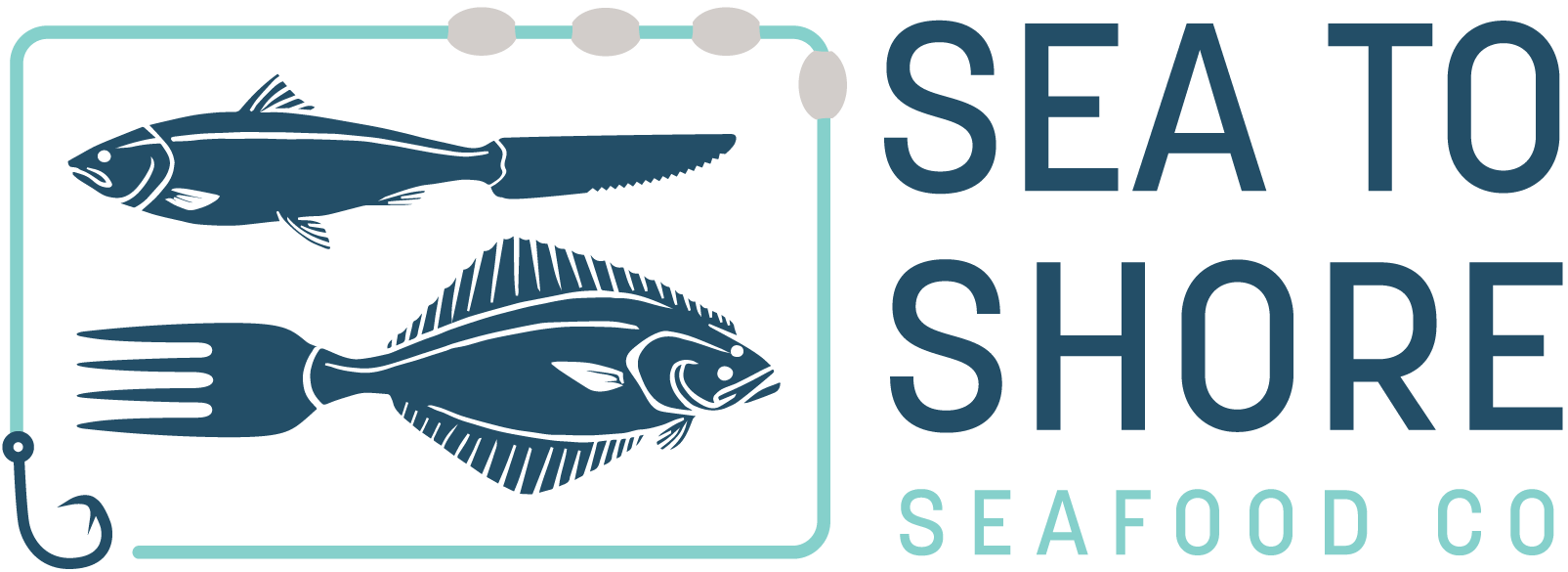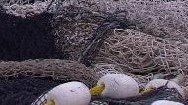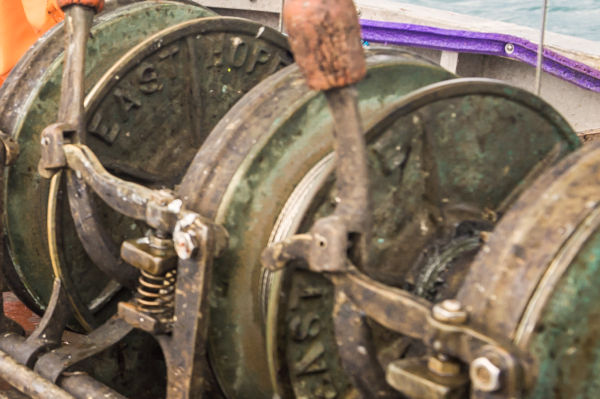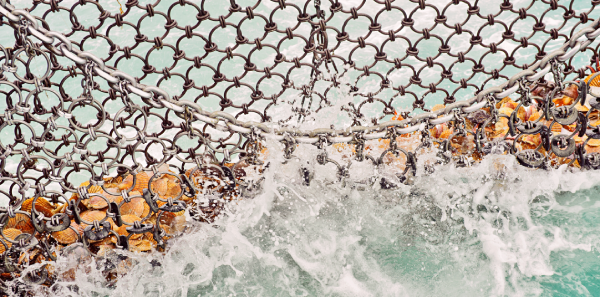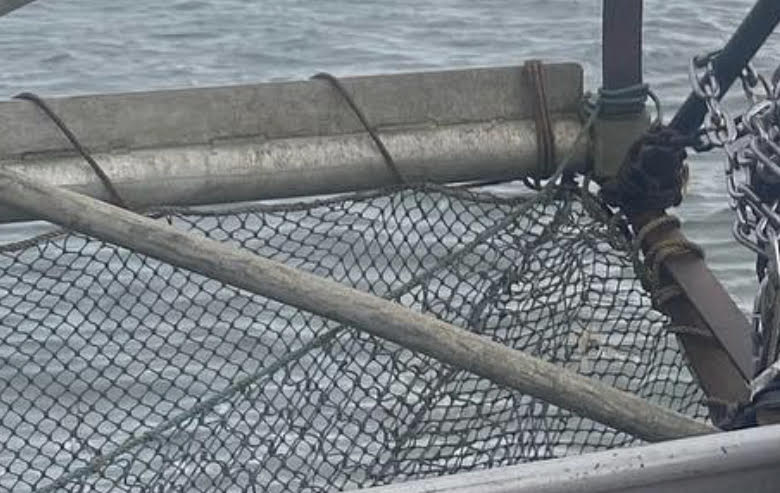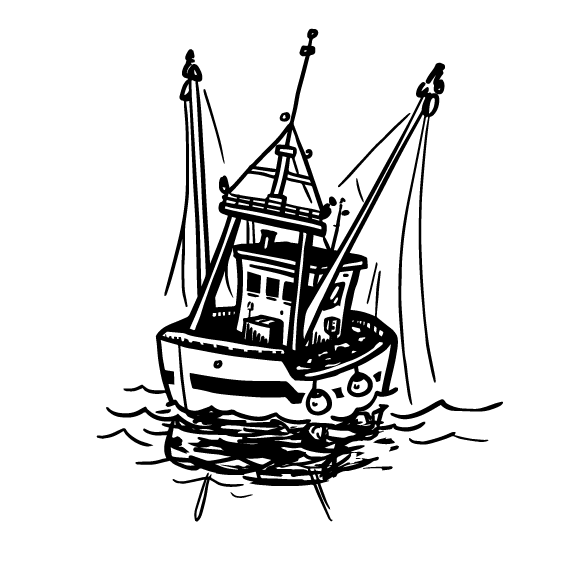Harvesting Methods
Learn how we catch our seafood at Sea to Shore Seafood Co!
Southeast Alaska Drift Gillnet

Most gillnetters are small, one and two people crew. A gillnet fisherman uses a net ranging from 1200 to 1800 feet long and approx. 30 feet deep. The web sized used, or meshes, change throughout the season to avoid certain salmon species and target others. The mesh restrictions can be enforced by the State of Alaska for fisheries management to protect certain species. An example of this restriction would be using a smaller mesh to protect king salmon, where the king salmon’s head is too large to be caught in the mesh, allowing it to essentially bounce off the net and avoid entanglement.
Gillnet fishing involves setting a net into the top section of the water column, closely monitoring the net and watching for “bobbers” on the corkline which means a salmon has put its head into the mesh and become entangled by its gill. Most nets fish for around an hour and then are hauled, handpicking each fish one by one. Gillnetters harvest all five species of salmon.
Longline

Longline fishing is used to harvest halibut and is also often used for harvesting black cod, rockfish and Pacific cod. Longline fishing vessels can range from small boat operations with one and two people crew, to larger operations with many crew members.
Longline gear is composed of groundline, buoy lines, and gangions, which are short pieces of line, with hooks on the end. Longlines are set along the seabed, with baited hooks every few yards. Longline hooks are retrieved one at a time. The fishermen can unhook other species of fish and return them alive to the sea without bringing them on board. In this way, longlining is considered a style of fishing with very little bycatch. There are also strict rules in place to prevent seabirds from being accidentally caught in longline gear.
Purse Seining

Purse seiners are generally larger than gillnetters, but by Alaska law may be no longer than 58 feet. Those fishing in southeast Alaska are larger vessels capable of operating in the sometimes stormy fjords and channels found in that part of the state.
A purse seine operation consists of a seine boat and a power skiff. The power skiff sets the net out of the back of the boat, pulls it around the desired “set” location and then circles back to the seine boat. The net is drawn closed at the bottom and hauled aboard resembling a “bag”. The fish are emptied from the bag directly into the chilled water of the fish hold. Most seine crews consist of four to five people. Seine boats catch all five species of salmon.
Trolling

In southeast Alaska the first commercial fishermen to encounter salmon are members of the troll fleet. Trollers are small fishing vessels operated by one or two people who fish with a number of lines and hooks baited with herring or artificial lures. When a fish bites the lure, it is immediately hauled in and processed. Trollers harvest king, coho, keta and pink salmon.
Pot Harvesting: (Crab & Spot Prawns)


Pots are used when harvesting Dungeness, king, and snow crab. It is difficult and grueling work. Steel traps or pots are baited with cut fish, then pushed over the side.
Buoys mark the location of each pot, and its owner. At the right time, judged by gut instinct and years of experience, the pots are hauled in, quickly emptied into the hold, rebaited, and returned to the ocean floor. The crab are kept live and delivered to processors fresh.
This same pot method is used when harvesting Spot prawns. Spot prawns are the largest and most valued of the Alaskan shrimp and are marketed as live, fresh, or frozen products. These are targeted with pots in generally steep and rough bottom terrain. For the freezer boats doing IFQ, individually quick frozen, after the pots are emptied the prawns are processed into tails and frozen onboard the vessel.
Alaska Weathervane Scallops

Harvested in the icy waters off the Gulf of Alaska, Alaska scallops are harvested via standard New Bedford-style dredges that consist of a 12 to 15-foot wide fixed frame to which a steel ring bag, consisting of 4-inch rings linked together, is attached to collect the scallops as the dredge is towed. Alaska Scallops are hand-shucked and frozen within hours, ensuring their just-caught flavor and texture.
Packed on board without the use of chemicals or preservatives, Alaska Scallop fishermen are able to consistently deliver products which live up to their reputation for flavor and freshness, and because the Alaska Scallop fishery is conservatively managed and tightly regulated, a consistent supply of high-quality seafood is assured, year-round.
Beam Trawl
A trawl is a large, bag-shaped net that is towed by a fishing vessel. The doors, because of the way they are built and rigged to the trawl, keep the mouth of the trawl open as it moves through the water. The headrope is equipped with floats forming the upper opening. The footrope is rigged with weights forming the lower opening.
Trawlers use sophisticated ultrasonic devices both for the location of fish underwater and for species identification. Beam trawl uses mid-water, or pelagic, trawls, which are designed to fish off the ocean bottom to avoid damage to the benthic habitat. Fishing with mid-water trawls is a selective method of fishing because the nets can be operated in ways to minimize the incidental catch of non-target species.
